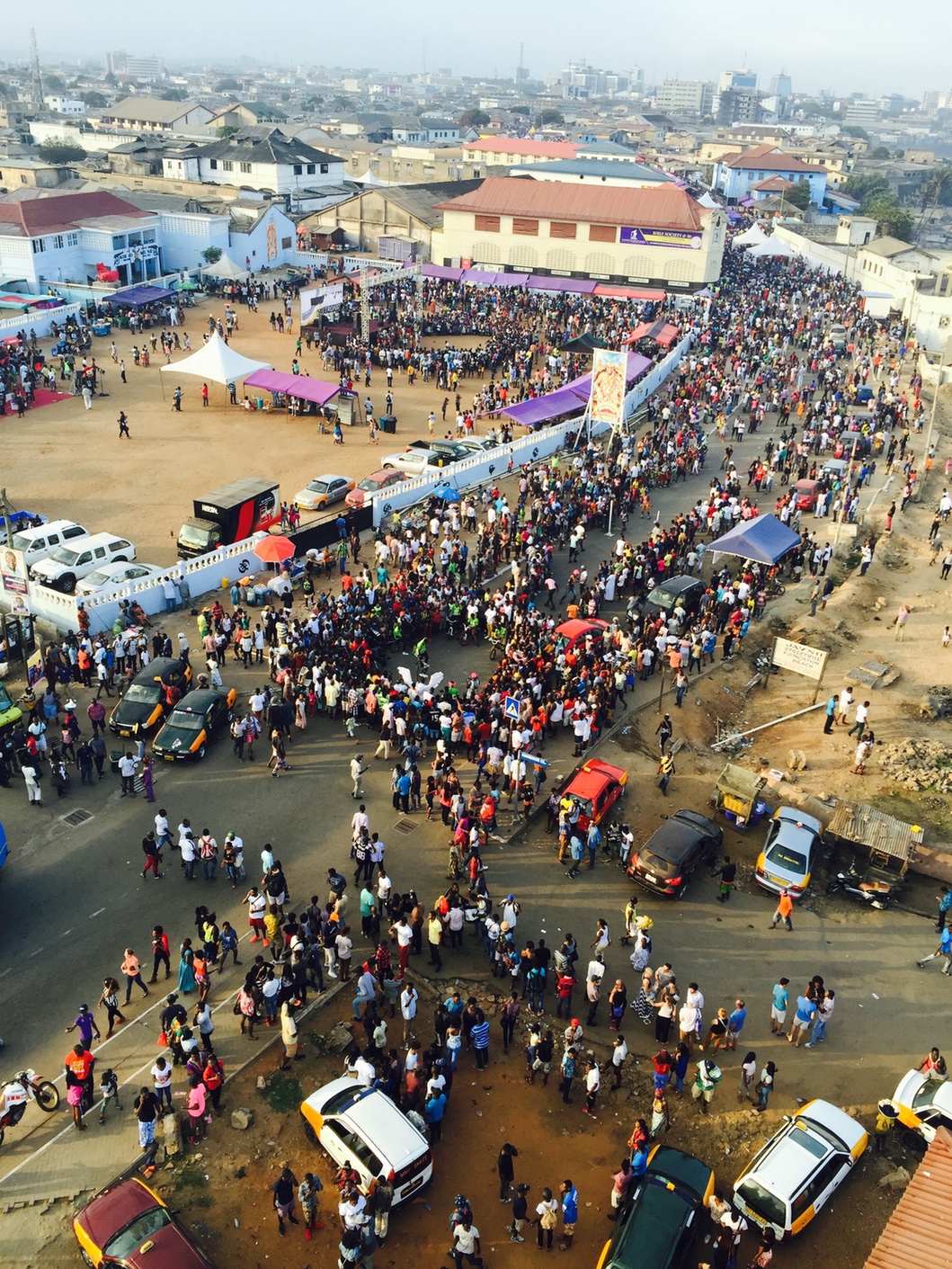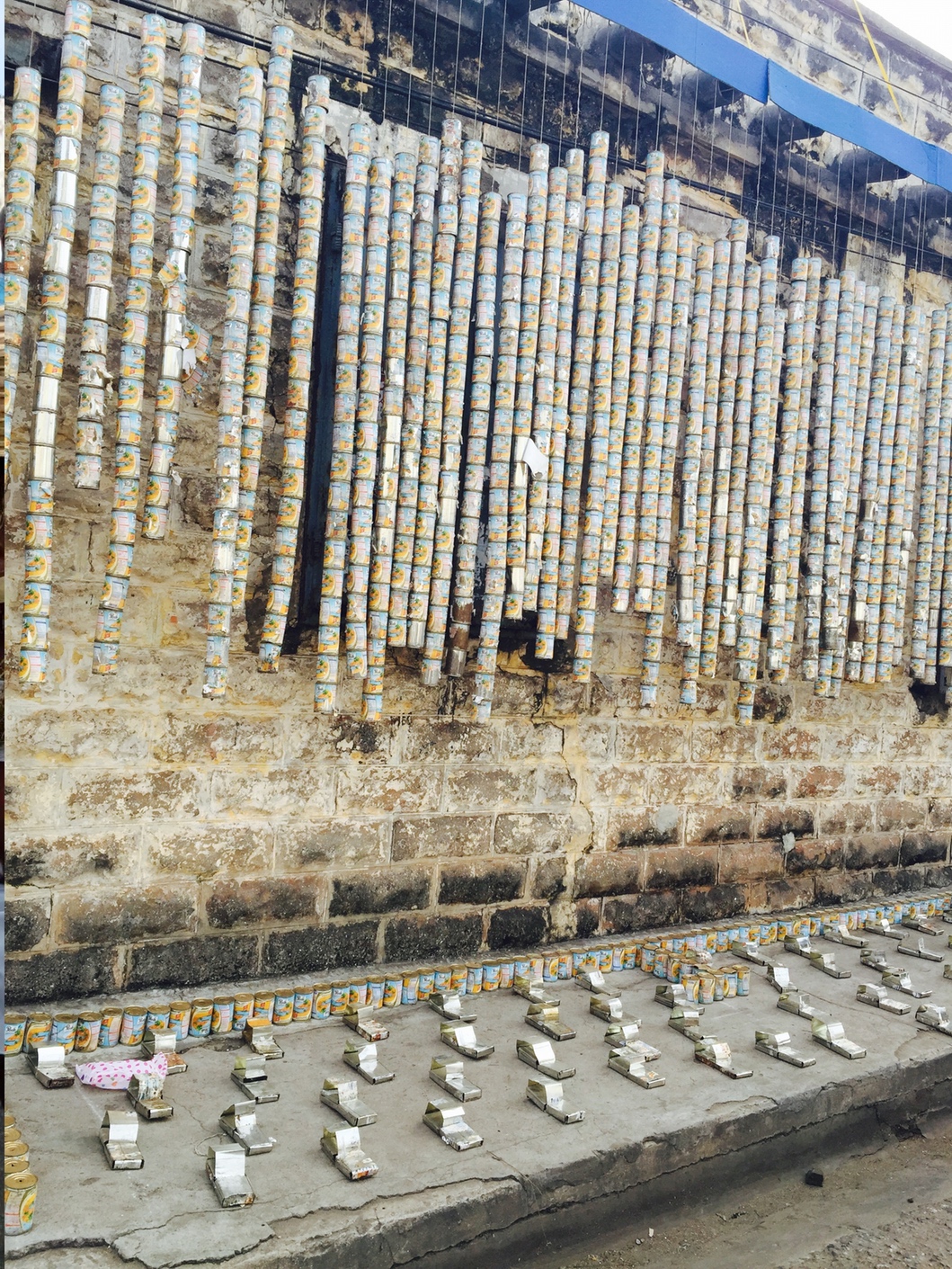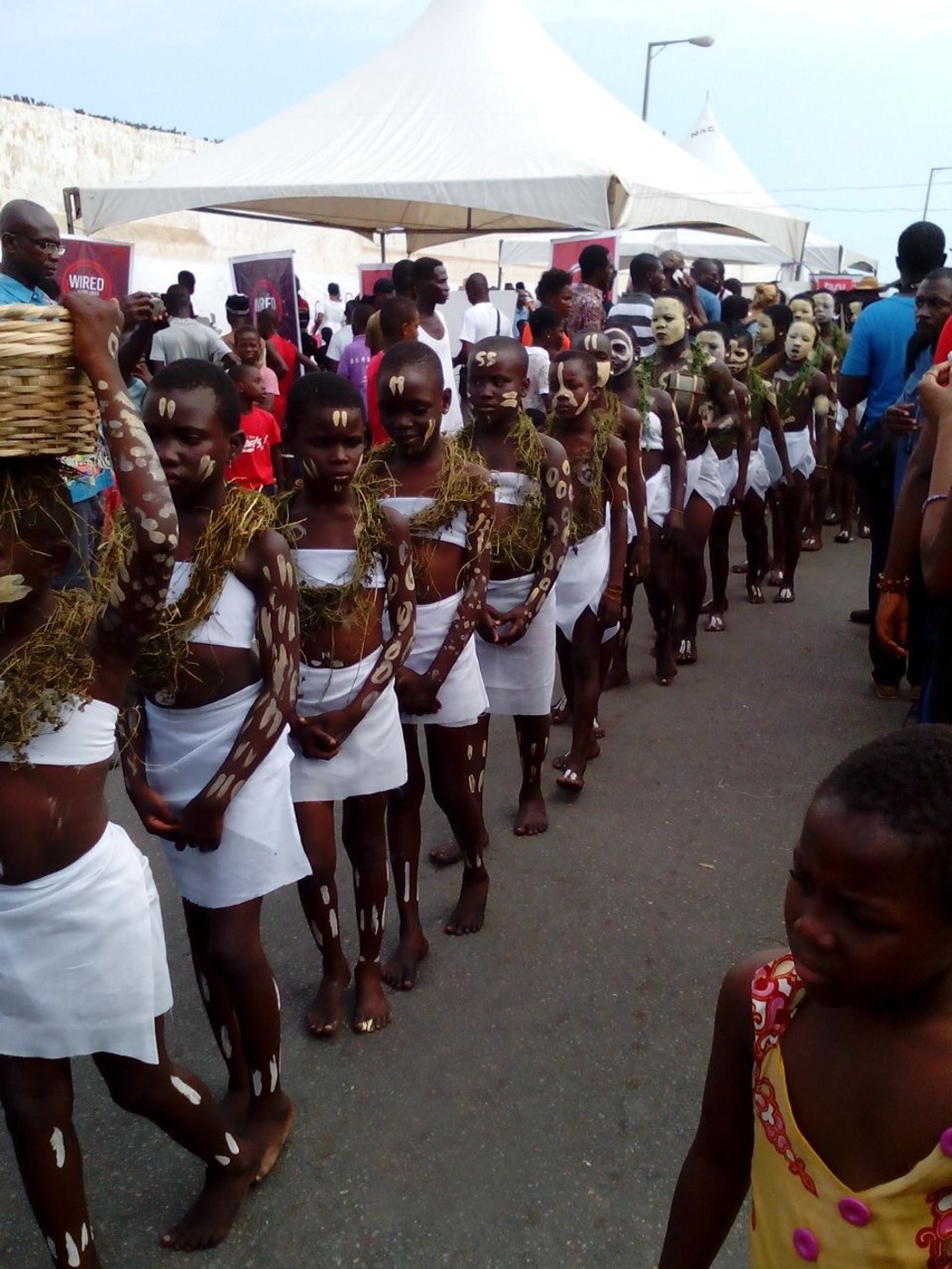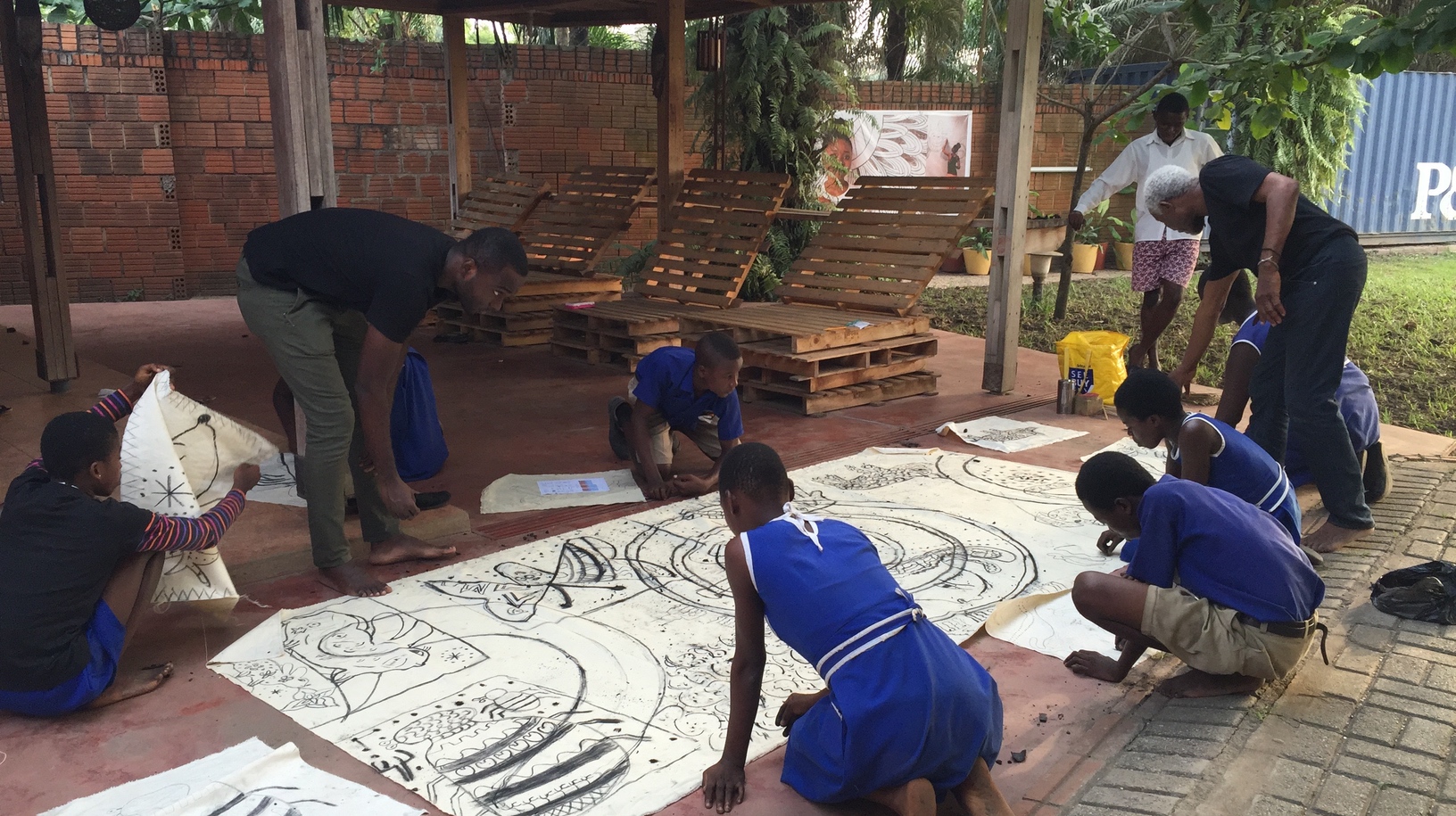Writing this was not easy at all.
“Who am I to speak for all artists in Ghana?”
I asked myself that question several times until I realized this:
This article is not necessarily meant to speak for all Ghanaian artists. Heck, each one of us has a different story despite some glaring similarities. This piece is simply meant to provide some insight into what this journey has been like for me. It’s meant to share what the past 10 months have been like since I moved back to Ghana as an artist.
So the single most important thing I can begin with is this:
It’s extremely tough, and “extremely tough” is even a severe understatement.
When you judge by events such as the annual Chale Wote Festival and Sabolai which grow bigger each year and increasingly draw in larger international audiences, one can safely say that some things art-wise are definitely headed in the right direction. There’s no question about that.
And it is always great and encouraging to see contemporary Ghanaian artists like Serge Attukwei Clottey and Ibrahim Mahama featuring in international publications like GOOD Magazine and AADAT Art, and featuring in galleries and exhibitions worldwide. We are indeed making strides in some respects and should be proud of these achievements.
But don’t be fooled.
It’s still the wild wild west out here for the majority of artists, at least in my eyes and from my experience.
So you know that scene from the movie IP Man where Donnie Yen had to fight his way through a ton of bad guys — with a limp — just in order to make his way home for dinner? That is the everyday life of an artist in Ghana.
Before you can make your way to your studio — if you even have one — to pour out your ideas and express your feelings, you’re constantly up against:
1. Your family members who simply do not understand what you’re doing and are totally convinced that it is all an utter waste of time 99% of the time.
2. Your friends, who like your family members cannot wrap their heads around what you’re doing and are also convinced it is an utter waste of time 99% of the time. They are also quick to comment “that’s a nice painting!” even when it’s a charcoal drawing. Clearly they’re not paying attention.
3. The handful of art supply stores available who have always run out of that one tool or material you need to complete a piece. Be prepared to improvise heavily.
4. The general lack of respect for the arts in this part of the world. (Even though I’ve come to learn that this may almost be a global problem, I believe it’s far worse in Ghana.)
5. President Mahama.
With that list in mind, now consider this: I studied Economics and Statistics in college. Most people in Ghana who know that fact about me always look at me as some version of idiot, simply for pursuing a life in the art and design world instead. They constantly treat me as though my life was over even before it began. “Oh the horror!”
The picture looks even bleaker if like me, you’re the kind of artist who dabbles in the more ‘experimental’ aspects of art. I mean it’s tough enough if you’re the conventional painter, sculptor or musician. Don’t get me wrong that can also be quite a rough existence as well.
But when people cannot even begin to comprehend an idea you’re trying to get across through some interactive art concept or through some art installation which addresses some particular historical narrative, you might as well just jump off a cliff. (Okay, perhaps that last bit is slightly morbid but you get the picture.)



A few shots from the 2015 Chale Wote Art Festival
But before you go on, please forgive me if all the above sounds super negative.
Trust me it’s not meant to be that way at all. Because like in any well written cliché, challenges like the ones outlined above can always be the fuel for something more positive; something more beautiful.
Coming face to face with these difficulties has not only ramped up my perseverance, but has increased my will to innovate and my drive to succeed. First, believing in yourself and in your work is key. Because without that deep trust in yourself, there is absolutely no point in embarking on the creative journey.
However it would be a lie if I said that that was all that was required. I’ve come to learn that having some kind of external support system is necessary too. If you have important stories to tell through your art, you have to find those who want to hear and echo your narrative as well.
For me, a vital part of this support system starts with finding a reliable mentor.
In places like Ghana, art is different. Here we live our art on a daily basis. The way we dress on different occasions — like weddings, outdoorings, funerals — is a form of artistic expression. The way women balance layers of goods on their heads, while they casually walk through the streets carrying out transactions is a form of performance art. The way fruits and vegetables are arranged carefully and methodically on wooden tables in our markets is a kind of art installation in itself. The dance of a fetish priest at a local festival or a parade is a form of art.
For many people in Ghana, the more conventional way of thinking of art — perhaps hanging a piece on your living room wall or installing a sculpture somewhere in your home — is a relatively new phenomenon. That kind of appreciation for art is still growing.
Because of such cultural nuances, it is important to find and learn from established artists who have managed to forge successful careers in Ghana, despite the complexities. The men and women who have been there, done it and seen it all. The mad ones who pursued their passions to create, amidst inevitable pushbacks and the several coup d’etats of days past.
I’ve been privileged to have the legendary Kofi Setordji play such a role on my journey. He’s a walking encyclopedia of art and Afrika and you certainly wouldn’t even be reading this article if I hadn’t met him several months ago. To simply say I’ve learned a lot from him just doesn’t cut it.
Having Kofi as a guide has been like having a “Google Maps for the Ghana Art Scene” app. And like Google Maps, although you cannot always trust the directions, more often than not it will get you to the right destination. Even though Kofi and I may have our disagreements and even though my work may never be good enough for him, I owe him a whole lot and believe in the worth of his invaluable guidance. As the Zen proverb says: “when the student is ready, the master will appear.”

Running an art workshop with my grey-haired mentor Kofi Setordji
That said, your mentor cannot be the only one who believes in you and your work:
You need to build an audience that believes in what you’re looking to achieve too.
In Ghana, this may mean digging up this audience from underneath some rocks by Lake Bosomtwe. It may mean hiking Shai Hills to find those two people who care about what your art looks to communicate. Yes, it is quite difficult to find people who may care about your work but you’ve got to put in the work to reach them anyway.
Such people may be rare in this part of the world but they definitely do exist. You’ve got to do all it takes to unearth this audience because that is basically the lifeblood of a career as an artist; your audience. Developing that following is the hardest part of the trade, and it is the part that will require the most effort.
Beyond the need to constantly create and challenge yourself, you’ve got to make the time to get your work out there and in front of the right people who will make that all important purchase. Here, you’ve got to take make expert use of the internet and social media, find ways to access the limited wall space in galleries in Accra and beyond, and influence word of mouth in the most beneficial ways possible. Basically, marketing your work by all means necessary.


Navigating Ghana As An Artist (Vol. 1)